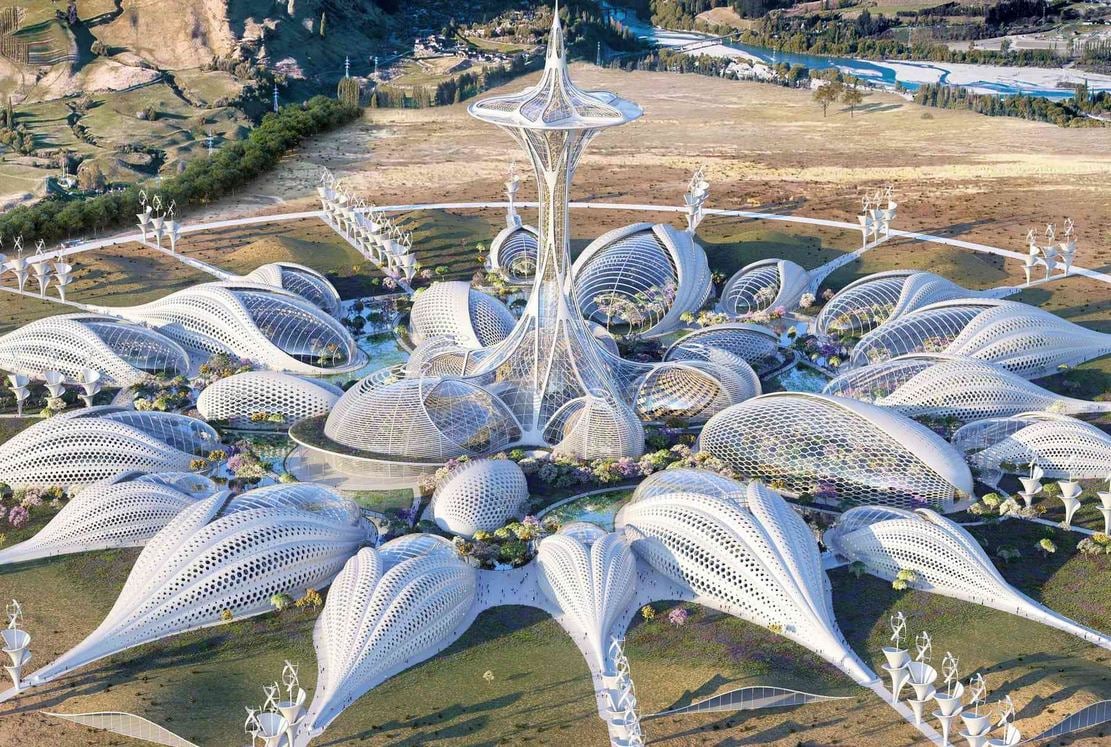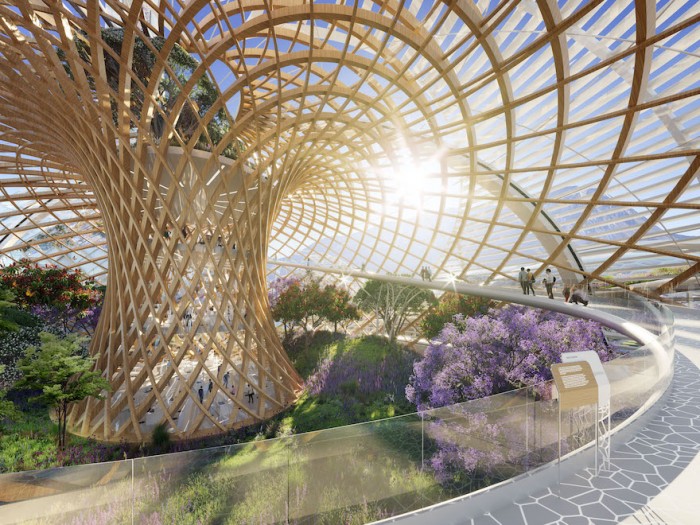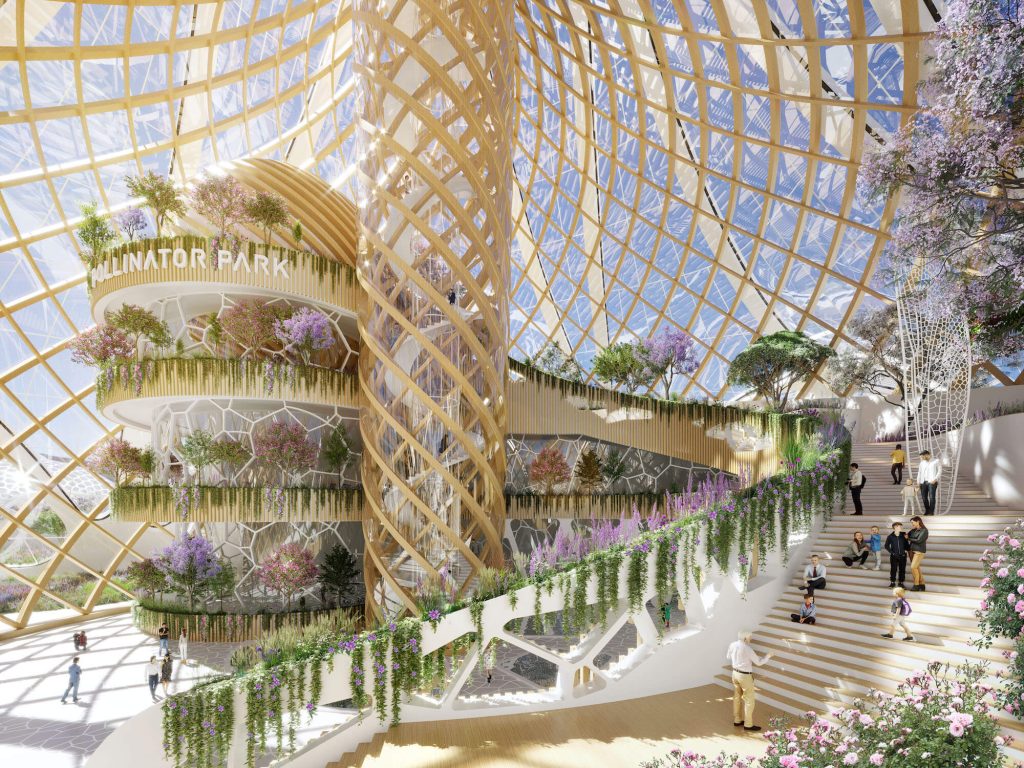Solarpunk, as both a genre and aesthetic, envisions collective futures that are brimming with life, encompassing actions, policies, and technologies that support this vibrant vision. It embraces sustainable practices, renewable energy sources, and ecological designs to foster a harmonious coexistence between humans, nature, and technology. One remarkable example of this solarpunk ethos in action is “The Pollinator Park,” an exciting project unveiled by the European Commission. Developed in collaboration with renowned architect Vincent Callebaut, this visionary initiative showcases the potential of solarpunk principles in transforming agriculture and promoting biodiversity in Europe.

At its core, The Pollinator Park is an innovative initiative aimed at revolutionizing conventional agricultural practices into regenerative and sustainable systems. It tackles urgent challenges such as climate change, biodiversity loss, and food security while also promoting social and economic well-being. Situated in the heart of Europe, this futuristic park serves as a model for thriving agriculture and harmonious coexistence, leveraging renewable energy and advanced technologies.
Renewable energy integration is a crucial aspect of The Pollinator Park. Solar panels, wind turbines, and other clean energy technologies power the park’s operations, reducing reliance on fossil fuels and minimizing carbon emissions. These sustainable energy sources not only support agricultural practices but also generate surplus energy that can be shared with neighboring communities.

The design of the park itself exemplifies solarpunk ideals. Vincent Callebaut, renowned for his eco-friendly architecture, has crafted a visually stunning and functional space. Vertical gardens, greenhouses, and hydroponic systems maximize space efficiency while promoting biodiversity. These structures are designed to be self-sufficient, incorporating rainwater harvesting, composting, and natural pest control methods.

A distinguishing feature of The Pollinator Park is its dedicated focus on pollinators. Bees, butterflies, and other pollinators play a vital role in maintaining ecosystems and supporting crop production. The park includes habitats specifically designed to attract and support these essential creatures. It provides an ideal environment for pollinators to thrive, ensuring crop pollination and the preservation of biodiversity.

Furthermore, The Pollinator Park fosters community engagement and education. It serves as a hub for research, innovation, and knowledge sharing, inviting scientists, farmers, and local communities to collaborate. Workshops, seminars, and interactive exhibitions raise awareness about sustainable agricultural practices and the significance of conserving biodiversity. The park also encourages urban farming initiatives, empowering individuals to grow their own food and contribute to a more resilient food system.

The European Commission’s Pollinator Park encapsulates the future of solarpunk-inspired agriculture and biodiversity. Through showcasing innovative technologies, sustainable practices, and community involvement, it presents a hopeful and inspiring vision for a more sustainable and harmonious future. This ambitious project demonstrates that by embracing solarpunk principles, we can reimagine our relationship with the environment, harness renewable energy, and promote biodiversity while ensuring food security and community well-being.











